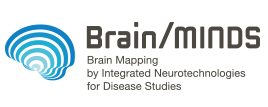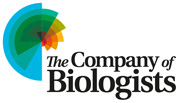RIKEN Center for Biosystems Dynamics Research (RIKEN BDR) is a new center that was launched in April 2018 through the integration of three former RIKEN centers: CDB, QBiC and CLST. In March 2019, RIKEN BDR started an annual symposium series to promote discussion among leading scientists from Japan and overseas on themes chosen from scientific fields related BDR's missions with the aim of deepening our understanding of those fields.
The BDR Symposium 2020 entitled "Emergence in biosystems" will be held at the RIKEN BDR in Kobe, Japan, from Monday, March 2 to Wednesday, March 4, 2020.
Recent advances in computational methodologies and artificial intelligence have now enabled us to investigate entangled secrets of life that had long remained unsolvable, including one of the most fundamental properties - emergence. Emergence is the integrative property of an entity that does not appear in its components or in their simple summation. Biosystems consist of multiple biological scales, from molecular to whole body levels, and often exhibit unique properties that are only manifested at higher scales established by self-assembly or self-organization of components from lower scales. Well-known examples of emergent phenomena include tissue formation by multiple cells differentiated from a single stem-cell type and higher-order organ networking to integrate different tissues. Thus, emergence is a common key concept for addressing mechanisms of life, across different life science fields. This symposium will cover the latest research advances of emergent phenomena with a focus on computational and engineering approaches, including cutting-edge technologies such as artificial intelligence, to understand emergent properties in biology.
The second RIKEN BDR Symposium targets a wide range of relevant topics, including (i) Origin of life, (ii) Protein/RNA self-assembly, (iii) Intracellular organelle formation, (iv) Cell assembly and organ formation, and (v) Brain function and its underlying principle. We hope that this symposium will be a great opportunity for all participants to stimulate cross-disciplinary interactions and discussions that open new avenues of life science studies.
The symposium will be held over three days, with the program scheduled to start on the morning of March 2 and finish in the afternoon of March 4. The program will include both oral and poster sessions. The number of participants will be limited to approximately 180.
We encourage the submission of abstracts for the poster session from many scientists to increase opportunities for lively and informative exchange of views. A small number of poster abstracts will be selected for oral presentations. A limited number of travel fellowships for graduate students and post-docs traveling to Japan will also be available.
The symposium series will be followed by the 2020 RIKEN BDR-CuSTOM Joint Symposium"Integrated organoid science: Stem cells, Engineering, Medicine". We encourage you to attend both symposia.
We look forward to welcoming you to Kobe and the RIKEN Center for Biosystems Dynamics Research.
Director, RIKEN Center for Biosystems Dynamics Research (BDR)
Organizers
Takuya Hayashi (RIKEN BDR, Japan)
Fumio Matsuzaki (RIKEN BDR, Japan)
Shuichi Onami (RIKEN BDR, Japan)
Tatsuo Shibata (RIKEN BDR, Japan)
Kam Zhang (RIKEN BDR, Japan)
Tony Hyman(Max Planck Institute of Molecular Cell Biology and Genetics, Germany)
Date
March 2 (Mon) - 4 (Wed), 2020
Venue
Auditorium, 1F Developmental Biology Building C
RIKEN Center for Biosystems Dynamics Research
2-2-3, Minatojima-minamimachi, Chuo-ku, Kobe 650-0047, Japan
(Approximately 5 minutes walk from "Iryo Center" port-liner train station)
For details, please see "Access".
Language
English (Simultaneous translation will not be provided)
Participation Fee
FREE (Lunch and Banquet fee required separately - optional)
Lunch: 3,000 JPY (3 days)
Banquet: 5,000 JPY (General) / 1,000 JPY (Student)
Support



This symposium will be held as a part of RIKEN SYMPOSIUM SERIES
